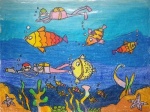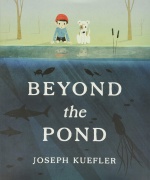On Discovering Our Histories Faithfully
November 03, 2024
Quote of the Week
"The more you know your history, the more liberated you are" -- Maya Angelou
Why Children Need To Know Their Family History
 Children can make invaluable self-discoveries by being curious about their family histories. We invite you to read the article here. Parents, teachers and elders can tend such processes by allowing children to ask questions and being open with them while responding, however mundane, goofy, heroic, joyful or negative the story may feel. Each family carries a unique and vast tapestry; there are ups, downs, and threshold moments. There is no straightforward telling. So what's asked of us is to be more faithful to the diverse parts of the stories, that we haven't yet seen or heard or spoken about. Such conversations allow families (biological or constructed) to be more inclusive of their origins and especially, help children nurture their Intergenerational self. Attuned to these ideas, we hope you will also enjoy this week's activity.
Children can make invaluable self-discoveries by being curious about their family histories. We invite you to read the article here. Parents, teachers and elders can tend such processes by allowing children to ask questions and being open with them while responding, however mundane, goofy, heroic, joyful or negative the story may feel. Each family carries a unique and vast tapestry; there are ups, downs, and threshold moments. There is no straightforward telling. So what's asked of us is to be more faithful to the diverse parts of the stories, that we haven't yet seen or heard or spoken about. Such conversations allow families (biological or constructed) to be more inclusive of their origins and especially, help children nurture their Intergenerational self. Attuned to these ideas, we hope you will also enjoy this week's activity.
Artwork credit: Ishanvi Chamria
Reading Corner
 Name: Beyond the Pond
Name: Beyond the Pond
Author and Illustrator: Joseph Kuefler
Ages: 4-8
"Just behind an ordinary house filled with too little fun, Ernest D. decides that today will be the day he explores the depths of his pond. Beyond the pond, he discovers a not-so-ordinary world that will change him forever." -- Publishers
Be the Change
Invite children to dive into the diverse histories living besides us -- in tangible and intangible forms. Identify one entity; for example, a building in your neighborhood, a tree, a temple, a family food, a song or an idiom, a ritual, a piece of clothing, a photograph, etc. Gather with children and explore how did it come into existence? who and what led to its birth? how have you come to associate with it? who all are related to this object or entity besides yourself? Encourage children to write or sketch their findings in a notebook, and discuss what new learning came their way, and how did the interface feel. Think of this activity as a discovery project.





